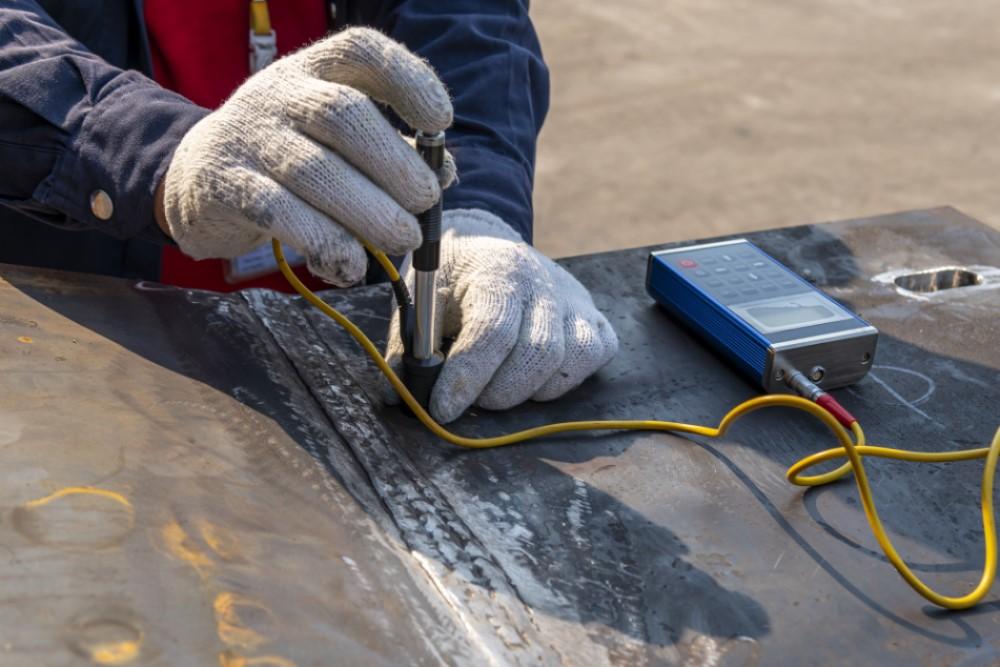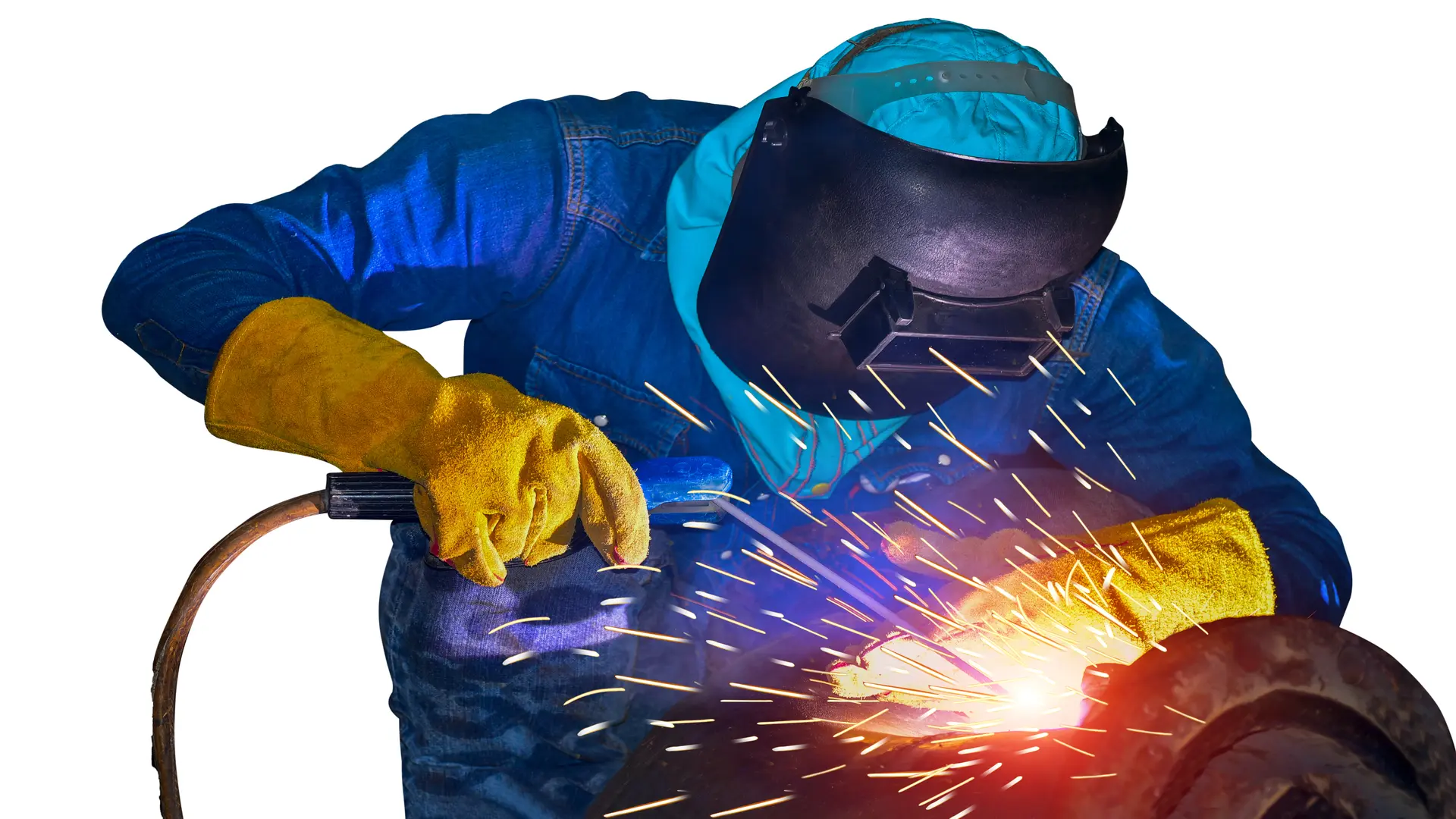The Essential Function of Welding Inspection: Recognizing the Treatments, Devices, and Requirement That Govern Quality Evaluation in Welding Workflow
Welding inspection is an important element of quality assurance in welding procedures, making sure the structural integrity and security of bonded assemblies. Understanding the interaction in between inspection techniques and regulatory conformity increases important inquiries concerning the obstacles encountered in preserving these necessary methods.
Significance of Welding Examination
Welding assessment is important in making certain the stability and security of welded frameworks, as it often acts as the last checkpoint prior to parts are taken into service. The value of this assessment depends on its capacity to determine prospective defects that may endanger the efficiency and long life of bonded joints. Given the high stakes entailed, specifically in industries such as building and construction, aerospace, and vehicle, comprehensive assessment procedures are essential.
Welding defects can develop from numerous variables, consisting of incorrect strategies, inadequate devices, or improper materials. Failing to detect these problems can lead to disastrous effects, including structural failings, which may lead to injury, death, and significant financial liabilities. Welding assessment provides a methodical technique to evaluate the high quality of welds, ensuring compliance with market requirements and governing requirements.
Additionally, reliable welding examination contributes to enhancing total efficiency by reducing rework and making sure that jobs remain on schedule. By promoting a society of high quality assurance, organizations can also increase their credibility and client depend on. In significance, the relevance of welding examination can not be overemphasized, as it plays a crucial duty in safeguarding both human lives and investments in infrastructure.
Key Inspection Procedures
A detailed technique to evaluation procedures is important for guaranteeing the high quality and dependability of welded joints. Effective inspection begins with pre-weld assessments, that include examining welding specs, material buildings, and joint layouts to determine prospective challenges. This prep work stage establishes a baseline for high quality expectations.
Throughout the welding procedure, in-process assessments are important. Assessors keep track of parameters such as warmth input, travel speed, and electrode angle to make certain conformity with recognized requirements. Visual assessments are the very first line of defense, making it possible for the identification of surface flaws, such as fractures, porosity, or insufficient combination.
Post-weld inspections involve advanced methods to analyze the stability of the joint. This may include non-destructive screening (NDT) techniques such as ultrasonic testing, radiographic testing, or magnetic fragment testing. These strategies offer much deeper insights right into the internal structure of the weld, exposing prospective problems that might not show up on the surface.
Documentation plays an important function throughout the inspection procedure. Detailed documents of evaluations, consisting of searchings for and restorative activities, guarantee traceability and accountability, ultimately adding to continuous enhancement in welding methods and total quality control.
Vital Devices for Inspection
Efficient assessment depends on using specialized tools developed to evaluate the top quality and stability of bonded joints. Secret tools in this procedure include aesthetic evaluation tools, such as amplifying glasses and borescopes, which permit examiners to determine surface area flaws and irregularities. Furthermore, ultrasonic screening (UT) tools plays an essential function by making use of high-frequency acoustic waves to discover inner problems within welds, ensuring that hidden weaknesses are identified before they bring about failing.
Radiographic screening (RT) is one more vital approach, utilizing X-rays or gamma rays to create photos of the welds, revealing inner problems that might not be noticeable with various other assessment techniques - Houston Welding Inspection. Magnetic particle screening (MT) is used for ferromagnetic products, allowing inspectors to find surface area and near-surface problems by using magnetic fields and fine bits
Dye penetrant testing (PT) is also substantial, entailing the application of a fluorescent color to reveal surface area splits and interruptions. Each of these strategies and tools adds to an extensive inspection method, making sure that bonded structures satisfy the necessary top quality criteria and remain safe for usage in their respective applications.

Market Specifications and Regulations
Quality control in welding assessment is dramatically influenced by sector standards and policies that control techniques and make sure safety. These requirements offer as criteria for top quality, detailing the necessary procedures for documentation, screening, and evaluation. Key organizations such as the American Welding Culture (AWS), the American Society of Mechanical Designers (ASME), and the International Company for Standardization (ISO) develop guidelines that welding professionals must stick to throughout the evaluation procedure.
Conformity with these requirements is not only a matter of regulatory responsibility but also a vital part of threat monitoring in welding operations. They incorporate different aspects, consisting of material choice, welding methods, and qualifications of workers. AWS D1.1 lays out structural welding needs, while ISO 3834 specifies top quality requirements for welding processes.
Moreover, industry laws dictate the essential qualifications for welding inspectors, requiring accreditations that affirm their knowledge. This placement with requirements guarantees that examinations are done continually and accurately, inevitably protecting the integrity of welded frameworks. Sticking to these market standards and guidelines is critical i was reading this in promoting functional performance and preserving public count on welding techniques.
Obstacles in Welding Inspection


Welding examination faces various obstacles that can influence the integrity and safety of bonded structures. One substantial obstacle is the complexity of the welding refines themselves, which can differ substantially relying on products, joint setups, and environmental problems. This variability requires a thorough understanding of diverse examination techniques and their ideal applications.
Another difficulty hinges on the evolving nature of welding innovation. As brand-new products and methods are introduced, examiners have to constantly upgrade their knowledge and skills to efficiently examine the high quality of welds. Additionally, the physical access of weld areas can prevent inspection efforts, especially in constrained or risky click here to read atmospheres.
Moreover, human aspects play an important duty in welding examination. Houston Welding Inspection. The subjective nature of aesthetic examinations can bring about inconsistencies, as different inspectors may interpret the very same weld in a different way. This emphasizes the relevance of standardized training and accreditation for inspectors to ensure a consistent strategy to high quality assessment
Last but not least, the assimilation of sophisticated innovations, such as automated assessments and expert system, provides both obstacles and possibilities. While these innovations can enhance precision and efficiency, they also need significant financial investment and expertise to execute successfully. Dealing with these obstacles is important for keeping the stability of welded frameworks.
Final Thought
Welding assessment is vital for making sure the safety and security and integrity of welded frameworks. Inevitably, a robust welding assessment structure not just guarantees compliance with regulations but likewise enhances overall operational performance and integrity. Houston Welding Inspection.
Welding evaluation is an indispensable component of high quality guarantee in welding operations, guaranteeing the structural stability and safety and security of bonded settings up.Welding inspection is essential in making sure the stability and security of welded structures, as it often offers as the last checkpoint prior to parts are placed into solution. Discover More Welding examination gives a systematic approach to assess the quality of welds, guaranteeing compliance with industry criteria and regulative needs.
Quality guarantee in welding assessment is substantially affected by market standards and policies that regulate techniques and make certain safety and security. Secret organizations such as the American Welding Society (AWS), the American Culture of Mechanical Designers (ASME), and the International Organization for Standardization (ISO) establish guidelines that welding experts should adhere to throughout the inspection procedure.
Comments on “Reliable Houston Welding Inspection for Compliance and Safety Criteria”